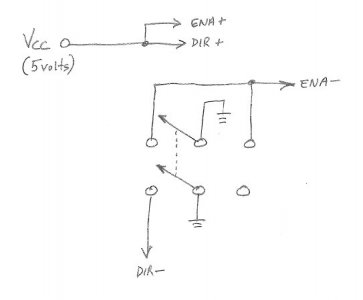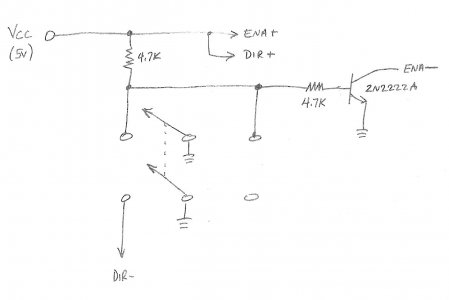You will need
1) A motor (you have one picked out)
2) A driver like this http://www.automationtechnologiesin...rs/kl-4030-24-40vdc-3-0a-microstepping-driver or this http://www.automationtechnologiesin.../geckodrive-g251-50v3-5a-stepper-motor-driver
3) Something to generate pulses to the driver. You could build something with a 555, but it might be easier to go with something like an Arduino. If you don't feel like programming it, I would be willing to help out. In any case, they are cheap. Amazon sells them for around $25.
4) A Power Supply. Lots of folks seem to use old PC power supplies. They only go up to about 12V. This will limit your maximum speed, but it seems like you want SLOOOOOW anyway.
5) Misc parts (couple switches, potentiometers, a box to put everything in, and some wire).
I'm guessing you want forward/reverse, start/stop, and speed control right?
1) A motor (you have one picked out)
2) A driver like this http://www.automationtechnologiesin...rs/kl-4030-24-40vdc-3-0a-microstepping-driver or this http://www.automationtechnologiesin.../geckodrive-g251-50v3-5a-stepper-motor-driver
3) Something to generate pulses to the driver. You could build something with a 555, but it might be easier to go with something like an Arduino. If you don't feel like programming it, I would be willing to help out. In any case, they are cheap. Amazon sells them for around $25.
4) A Power Supply. Lots of folks seem to use old PC power supplies. They only go up to about 12V. This will limit your maximum speed, but it seems like you want SLOOOOOW anyway.
5) Misc parts (couple switches, potentiometers, a box to put everything in, and some wire).
I'm guessing you want forward/reverse, start/stop, and speed control right?


